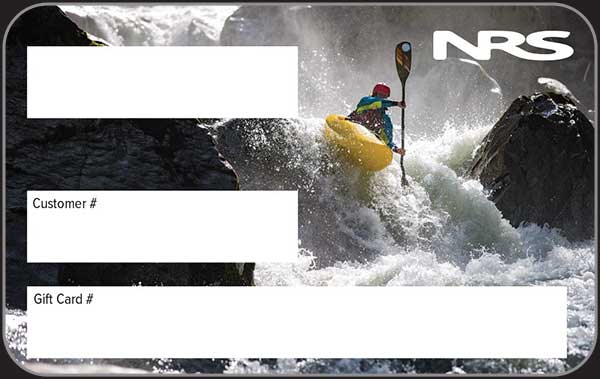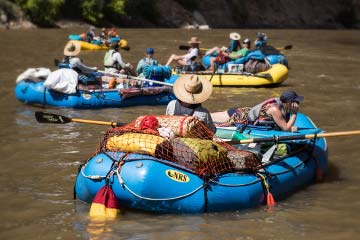The Fine Nine
Written by David Luinstra, an ACA Kayak and Swiftwater Rescue Instructor, who has been boating since 1983.
Every kayaker knows the bare essentials that will get him/her and their kayak on the river. But conscientious paddlers should have much more with them on every trip. Being properly prepared for the unexpected is every boater’s responsibility to the group. Being prepared is an important first step in the prevention of unwanted incidents. And the very best rescue scenario comes about when the incident never happened.
Here’s what I call the “Fine Nine”:
The Knows
(Yourself, Your Group, River, Weather, Evacuation Routes.) Prevention of an emergency is the best of all worlds and “The Knows” are our first line of incident prevention.
- Yourself: Know your limitations. What weather you are prepared for and willing to paddle in, what class of river you are comfortable paddling. Know your mental and physical status. Assess whether you’re rested or tired, tense and stressed or relaxed.
- Your Group: Is the group size appropriate for the river? Know the abilities and limitations of the people who will be on the river with you. Who are the strong boaters? Who needs to be watched? Should they even be considering paddling this river?
- The River: Know the river classification, current level, whether the level could rapidly change and the river’s hazards. Depending on the river difficulty, has someone in the group paddled the river recently? What are the known hazards of this river?
- The Weather: Have you checked the local forecast? A rain can quickly change the difficulty level of a river. A cold front can raise the risk of hypothermia.
- Evacuation Routes: Are there access points where a person could be evacuated in the event of an emergency? Members of the group should know where such access points are.
Clothing
Are they appropriate for the weather and a possible weather change for the worse? This is more important as the weather becomes colder and we paddle more remote river sections. This does not mean dressing for everything going right. Dress for the unexpected. Are you dressed for a swim or to help with a rescue of your paddling buddy? Are you dressed for a rescue where you might need to stand in the river for an extended time? There are many good articles about how to dress for cold weather paddling.
Shoes
(If you cannot wear shoes in your boat, you need a bigger boat.) Can you get out of your boat and run 50 to 100 feet over the flotsam, jetsam and natural hazards in time to save the life of your buddy who is pinned heads down in that Class III rapid you have run many times without a problem? Do you have time to get your sandals out of the back of your boat and put them on?
Flotation
Kayaks are not lighter than water and will sink, this also applies to the six foot playboats. A gallon of water weights about 8.3 pounds. 50 gallons of water (440 pounds) in your boat floating downstream is a hazard to you and the people trying to retrieve your boat. If your boat is not worth $40 worth of airbags, it is not worth me risking my life to return it to you.
Food and Water
Basic requirements of life are needed for day trips. Paddling is a lot of exercise and requires fuel and water. Consider carrying a little extra for the quick trip that is unexpectedly extended by an emergency. This happened recently to a group of paddlers planning a 2-mile trip. They spent the night within a quarter mile of the takeout because of an unexpected rise in water level that didn’t allow them to cross a tributary on foot.
Shuttle Keys
I suggest two sets of shuttle keys, one permanently attached to your PFD and one permanently attached to your shuttle vehicle. The first time your buddies are cold, wet and you have locked them out of the shuttle your popularity is going down hill fast, especially if you or one of your buddies is hypothermic. Even a $50 chip key would seem cheap. Lost/not available shuttle keys are your fast track to becoming a campfire legend.
Rescue Equipment
Throw rope, knife, carabineers, prussic loops, webbing, swiftwater rescue training. These are basic tools for saving your buddy’s life or for them saving yours in a river emergency. Are you and your paddling buddies prepared to save each other’s lives?
First Aid Supplies
Medical kit, CPR mask, Wilderness First Aid Training and CPR training. While injuries on paddling tips are rare, they happen and can be minor to life threatening. Are you and your paddling buddies prepared to take care of each other?
Breakdown Paddle
(Unless you’re able and willing to hand paddle out.) I have carried my breakdown for about five years and have only needed it once. I have loaned it to boaters without paddles (including a canoeist who had lost both of his) six times and they were all really glad to borrow it so they did not need to walk out of remote rivers.
 NRS Gift Card: Always Fits, Always Wanted
NRS Gift Card: Always Fits, Always Wanted




